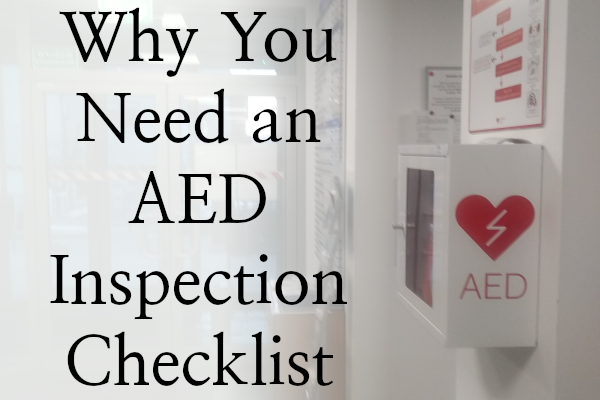5 Reasons to Use an Automated External Defibrillator (AED) Inspection Checklist

Every gym needs an automated external defibrillator (AED) for staff members to respond best to Sudden Cardiac Arrest (SCA). All gym staff should hold AED and cardiopulmonary resuscitation (CPR) certifications from American Red Cross, American Heart Association (AHA), or something similar. No, it doesn't mean they will know or retain all of the information, but it does imply familiarity and putting in the effort. Just like CPR certifications must be renewed, hardware should be audited regularly. Such audits should be standardized to ensure essential functions, in this case being able to defibrillate someone, are tested accurately in an uniform manner. What is the benefit of using an inspection checklist? I'll give you five.
Assured Confidence that your AED works
Bodybuilders have international chest day, Monday, when bench press and pec deck stations are expected to be busy. US Army soldiers have Motor Pool Monday where they complete preventive maintenance checks and services (PMCS) - inspections - on unit military vehicles. Vehicles are marked "not mission capable" if essential functions are inoperable. Checking mission critical functions regularly serves multiple purposes:
- Reduces the chance of missing faults
- Reminds you of current faults and their repair status
- Mitigates the chance of unfortunate surprises when it matters most
- Builds the habit of inspecting equipment accurately before missions
Likewise, you should be intimately familiar with how to use an AED so that you're thinking less when an emergency occurs. How can you be sure that your facility AED works properly unless you inspect its functions, battery life, electrodes, etc. regularly? Monthly AED inspection should be the bare minimum. My military experience, remembering those vehicle inspection checklists, tells me that weekly is best.
Ensure Proper Maintenance of AED Supplies
AED Batteries, pads, and electrodes can become damaged, decreasing its effectiveness. AED inspection tags provide a quick snapshot of how often its inspected. Its best to have a surplus of these AED accessories than multiple single points of failure. Accessories for an AED cost much less than the pain, legal issues, and other consequences for not having them.
AED Inspection Checklists Provide a Paper Trail for Liability
Clarification: I'm no law expert. If a faulty AED is a contributing factor to failure to revive someone, I'd expect someone to be blamed financially (sued), socially per job duties. State AED laws vary but I prefer to take initiative in doing what I can to mitigate such high risks. A sheet of paper with notes could be evidence for how long an issue existed, who knew, and what was done about it.
Because I'm not a law professional, I don't know if it could also be the reason you're the one held personally liable for damages.
Free AED Inspection Log Templates are Available
Your AED manufacturer may have a free AED inspection checklist. Its free to contact email or call them. American AED has a free inspection checklist you can request via email. I'm unsure about Stryker, Avive, ZOLL, Phillips, and others. If the manufacturer doesn't, there's a downloadable inspection checklist from CprBlsPros without having to provide any contact info for a mailing list. You could also develop your own using the AED.US maintenance guide. Lastly, internal business systems may have health information technology, or health IT, features to track maintenance and usage of AEDs.
Get people moving. Keep people moving.



